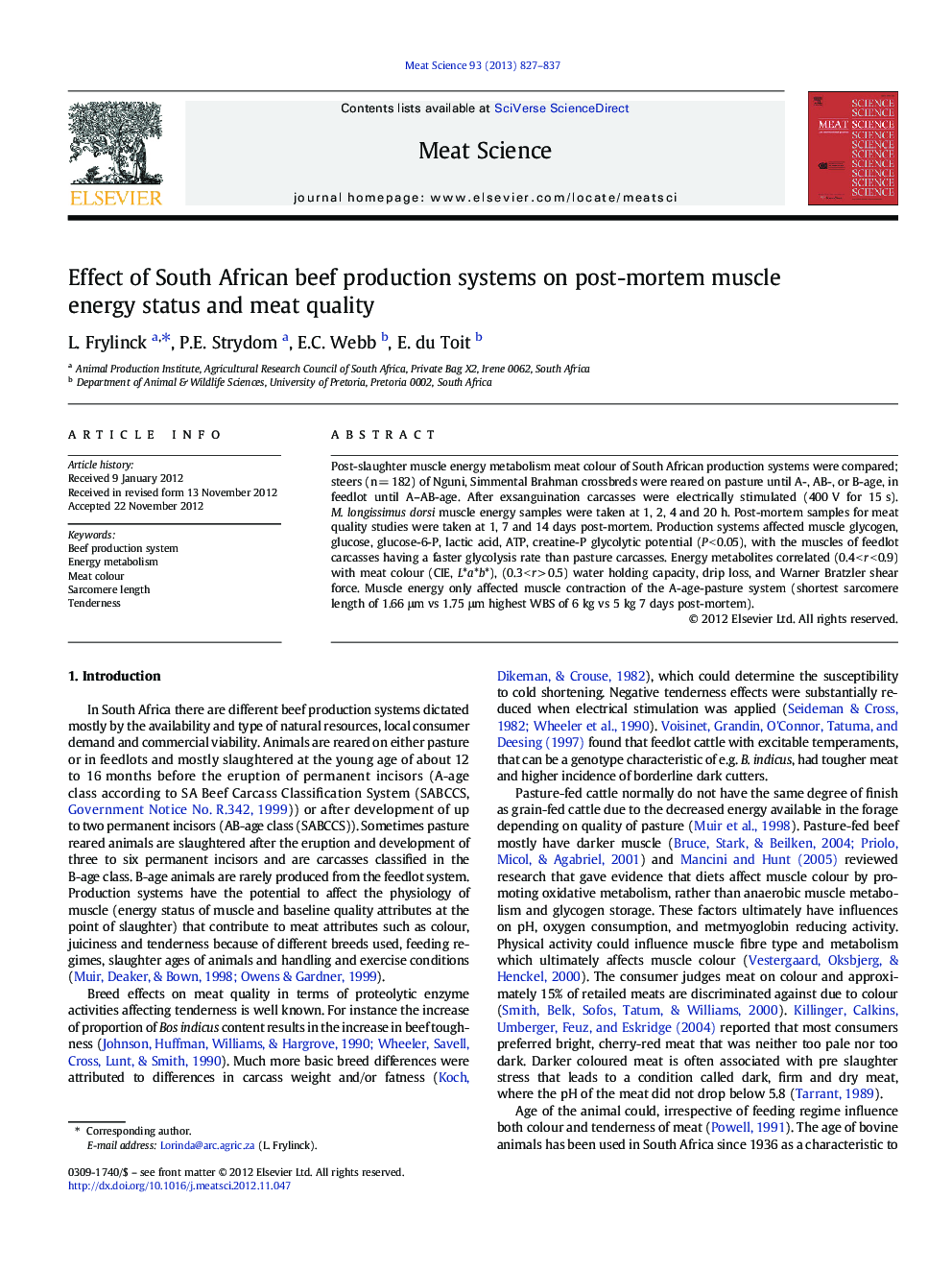| کد مقاله | کد نشریه | سال انتشار | مقاله انگلیسی | نسخه تمام متن |
|---|---|---|---|---|
| 2450032 | 1109615 | 2013 | 11 صفحه PDF | دانلود رایگان |

Post-slaughter muscle energy metabolism meat colour of South African production systems were compared; steers (n = 182) of Nguni, Simmental Brahman crossbreds were reared on pasture until A-, AB-, or B-age, in feedlot until A–AB-age. After exsanguination carcasses were electrically stimulated (400 V for 15 s). M. longissimus dorsi muscle energy samples were taken at 1, 2, 4 and 20 h. Post-mortem samples for meat quality studies were taken at 1, 7 and 14 days post-mortem. Production systems affected muscle glycogen, glucose, glucose-6-P, lactic acid, ATP, creatine-P glycolytic potential (P < 0.05), with the muscles of feedlot carcasses having a faster glycolysis rate than pasture carcasses. Energy metabolites correlated (0.4 < r < 0.9) with meat colour (CIE, L*a*b*), (0.3 < r > 0.5) water holding capacity, drip loss, and Warner Bratzler shear force. Muscle energy only affected muscle contraction of the A-age-pasture system (shortest sarcomere length of 1.66 μm vs 1.75 μm highest WBS of 6 kg vs 5 kg 7 days post-mortem).
► Production system affected both energy status and chilling rate of the carcasses.
► Glycolytic rate affected LD sarcomere length of lighter pasture fed carcasses.
► Glycolytic rate only affected tenderness of lighter pasture fed carcasses.
► Young feedlot steers produced best colour stable meat (highest L*, b*, hue angle).
Journal: Meat Science - Volume 93, Issue 4, April 2013, Pages 827–837